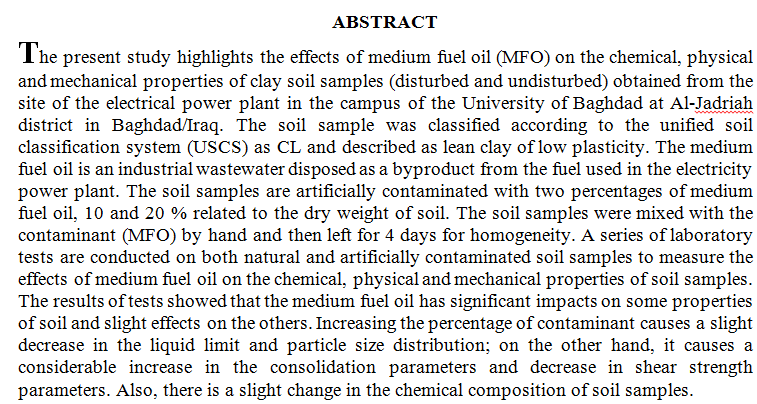Effects of Fuel Oil on the Geotechnical Properties of Clay Soil
Industrial wastewater
fuel oil
soil contamination
geotechnical properties
clay soil

